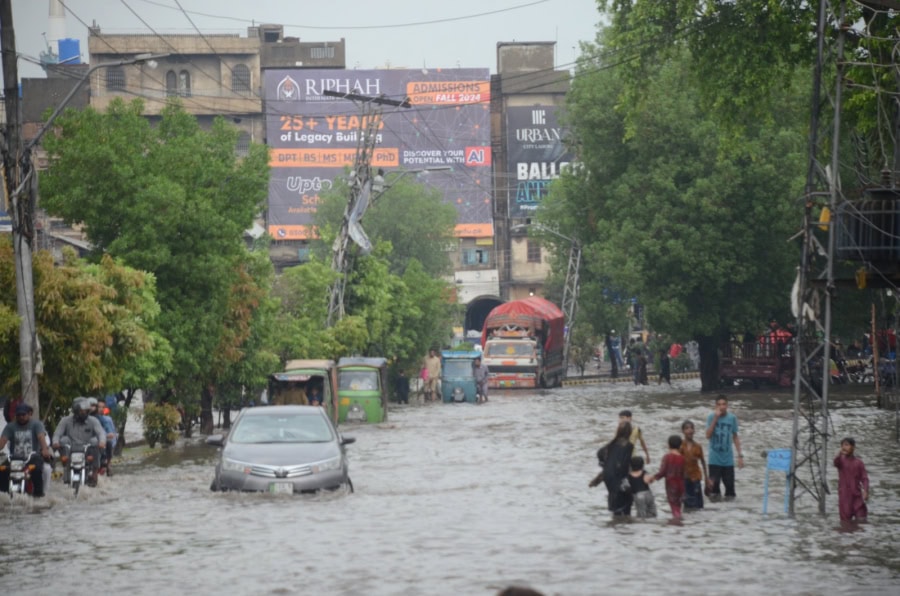ISLAMABAD – Above-normal rainfall and warmer-than-normal nights are expected in Pakistan during September, October and November 2024.
The Pakistan Meteorological Department (PMD) has anticipated that El Niño Southern Oscillation (ENSO) will persist in a weak negative phase (weak La Niña). The Indian Ocean Dipole (IOD) is forecasted to continue in a neutral phase throughout the season.
Given the prevailing atmospheric conditions, the climatic outlook for Pakistan is as follows:
Seasonal Outlook (Rainfall): Normal to above-normal rainfall is likely across the country, with maximum positive departure over Northeast Punjab and Southeast Sindh.
In contrast, Northern Khyber Pakhtunkhwa, Kashmir and Gilgit-Baltistan may receive a slight shortfall, but still near-normal rainfall. Meanwhile, most of Balochistan is expected to receive slightly above-normal rainfall. Notably, the season is anticipated to start wetter, with a drier second half.
Seasonal Temperature Outlook: Daytime temperatures are expected to be near-normal to slightly cooler than normal across the country, with a notable exception in Northern Khyber Pakhtunkhwa and Gilgit-Baltistan, where warmer-than-normal maximum temperatures are predicted.
In contrast, nighttime temperatures are forecast to be above normal nationwide, with significant warm anomalies expected in Northern Khyber Pakhtunkhwa, Gilgit-Baltistan, and Southwestern Balochistan. These regions can anticipate marked departures from normal minimum temperatures during the season.
Impacts: Satisfactory soil moisture is expected to be available for the sowing of upcoming Rabi crops. Favourable soil moisture conditions are expected to support the sowing of upcoming Rabi crops, ensuring a satisfactory start to the season.
Water availability will benefit standing Kharif crops, promoting healthy growth and development. However, isolated showers, hail, or windstorms may pose a risk to Kharif crop harvesting activities, particularly in northwestern regions, potentially leading to crop damage and losses.
The anticipated temperature and humidity conditions in major cities, especially in central and southern areas, may create an environment conducive to a dengue outbreak during October and November, warranting public health preparedness.
High temperatures in Upper Khyber Pakhtunkhwa, Gilgit-Baltistan, and Kashmir may increase the likelihood of Glacial Lake Outburst Floods (GLOFs) in these regions during September. Prolonged dry spells during the season may lead to an increased risk of fog and smog formation in plain areas, potentially resulting in prolonged meteorological drought conditions and associated impacts on air quality, visibility and human health.










